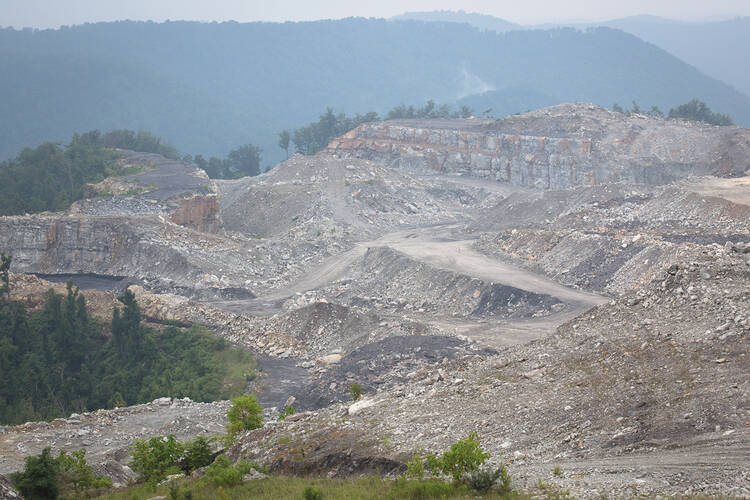Sitting on the shaded front porch of his two-room cabin on a lazy August afternoon, Delphin Brock pointed toward the next mountain ridge, where a few weeks earlier heavy equipment was remaking the landscape. Then, he said, noise from the mining activity echoed over the mountains.
“You could hear the scrapers. They were doin’ a lot of shootin’ over there, you know, using explosives,” Brock said.
“I come over here and see this strippin’, and I tell you, you just want to cry,” Brock said. “Nothing grows for four or five years. [All the wildlife] there has to leave and go somewhere else. And when the wind blows, the dust flies,” he said.
The widespread industry practice of mountaintop removal involves clear cutting trees and using explosives to blow apart the tops of mountains to expose coal seams. The resulting debris, called overburden, is used to fill valleys between the mountains, often covering streams that are the headwaters of important waterways.
This day, the mountaintop where the miners worked to extract valuable Appalachian coal was quiet. Part of the distant mountain had taken on a faint green hue, a sign that grasses have been planted in an effort to reclaim the now flattened surface to its “approximate original contour” as required by state law.
In a state where mining is the only significant industry, conservation often takes a back seat to mining interests. Because of the need for well-paying jobs in a state rife with poverty—17.8 percent in 2013—what the mining industry wants, the mining industry often gets.
Junior Walk is outreach coordinator at Coal River Mountain Watch in Naoma, W.Va., an organization formed in 1998 by people concerned about the effect of mountaintop removal on the environment and people’s safety and health. “My people have been in these mountains for generations, and they’ve always been under the boot heel of the coal industry, and I think there’s something really wrong about that,” Walk said. West Virginia is seen by mining executives as a “resource colony,” he said.
“That’s the way it’s been since the Civil War.... All of our laws were created here to expedite the process of extraction. To make it as easy as possible for people to come in, take what they want, leave a huge mess, make all their money and take it back up to Wall Street or wherever, and leave us with nothing,” said Walk, whose father and grandfather worked in the mines.
Bishop Michael J. Bransfield of Wheeling-Charleston understands the dilemma facing the region. The bishop, who addressed the issue of mine safety in a pastoral letter in 2010, said that although the need for jobs is great, environmental, safety and health concerns must not be overlooked.
Because of the transition to mountaintop removal, according to Bishop Bransfield, parts of southern West Virginia “have regressed tremendously.” The bishop has called for stronger monitoring and transparency in mining practices.
“What I’ve seen of mountaintop removal, I’m not really crazy about. I do see it as a big problem. I see the residue left and what happens afterward is very, very bad,” he said. “I believe that that [type of mining] will be reduced in the future because of what’s happening now,” he added. “So I don’t think we’re going to have as much of it as we’ve had in the past.”








